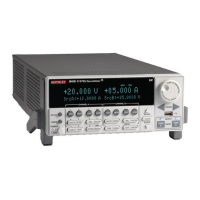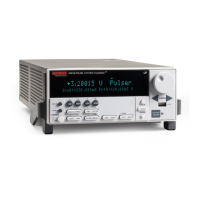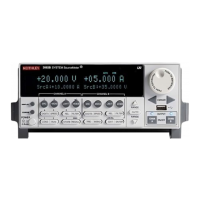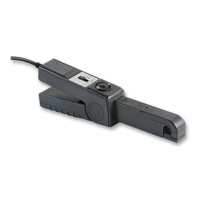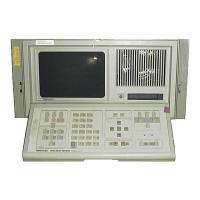Performance Verification 1-5
Verification limits
The verification limits stated in this section have been calculated using only the Model 2410
one-year accuracy spe
cifications, and they do not include test equipment uncertainty. If a
particular measurement falls outside the allowable range, recalculate new limits based both on
Mod
el 2410 specifications and corresponding test equipment specifications.
Example limits calculation
As an example of how verification limits are calculated, assume you are testing the 20V DC
output range using a 20V output value. Using the Model 2410 one-year accuracy specification
for 20V DC output of ±(0.02% of output + 2.4mV offset), the calculated output limits are:
Outp
ut limits = 20V ± [(20V × 0.02%
) + 2.4mV]
Output limits = 20V ± (0.004 + 0.0024)
Output limits = 20V ± 0.0064V
Output limits = 19.9936V to 20.0064V
Resistance limits calculation
When verifying the ohms function, it will probably be necessary to recalculate resistance
limits based on the actual calibrator resistance values. You can calculate resistance reading
limits in the same manner described above. Be sure to use the actual calibrator resistance
values and the Model 2410 normal accuracy specifications for your calculations.
As an example, assume that you are testing the 20kΩ range and that the actual value of the
nominal 19kΩ calibrator resistor is 19.025kΩ. Using the Model 2410 one-year normal
accuracy specifications of ±(0.07% of reading + 6Ω), the recalculated reading limits are:
Reading limits = 19.025kΩ ± [(19.025kΩ × 0.07%) + 6Ω]
Reading limits = 19.025kΩ ± 19.3Ω
Rea
ding limits = 19.0057kΩ to 19.0
443kΩ
2410-902-01.book Page 5 Monday, November 7, 2005 2:49 PM

